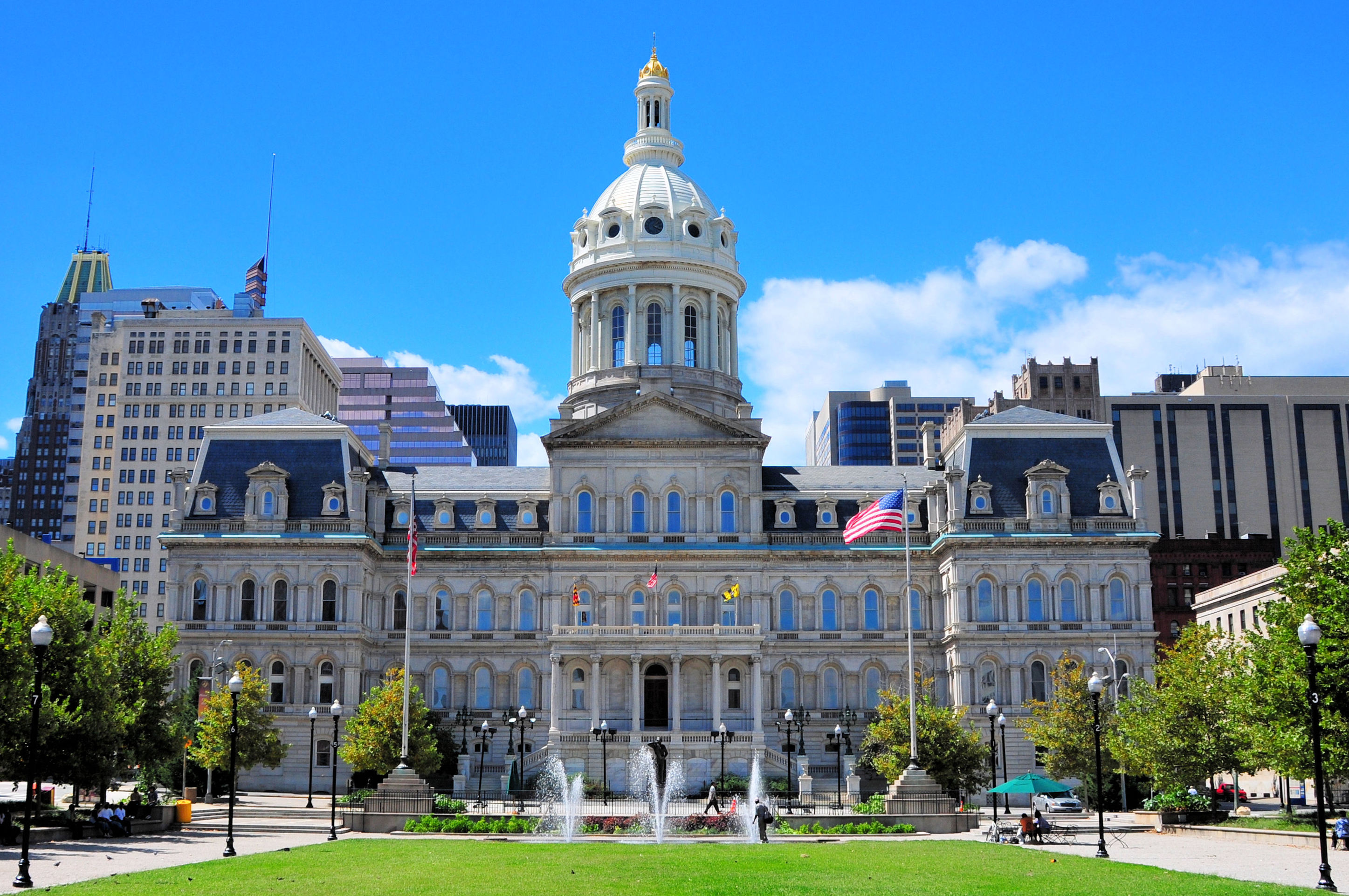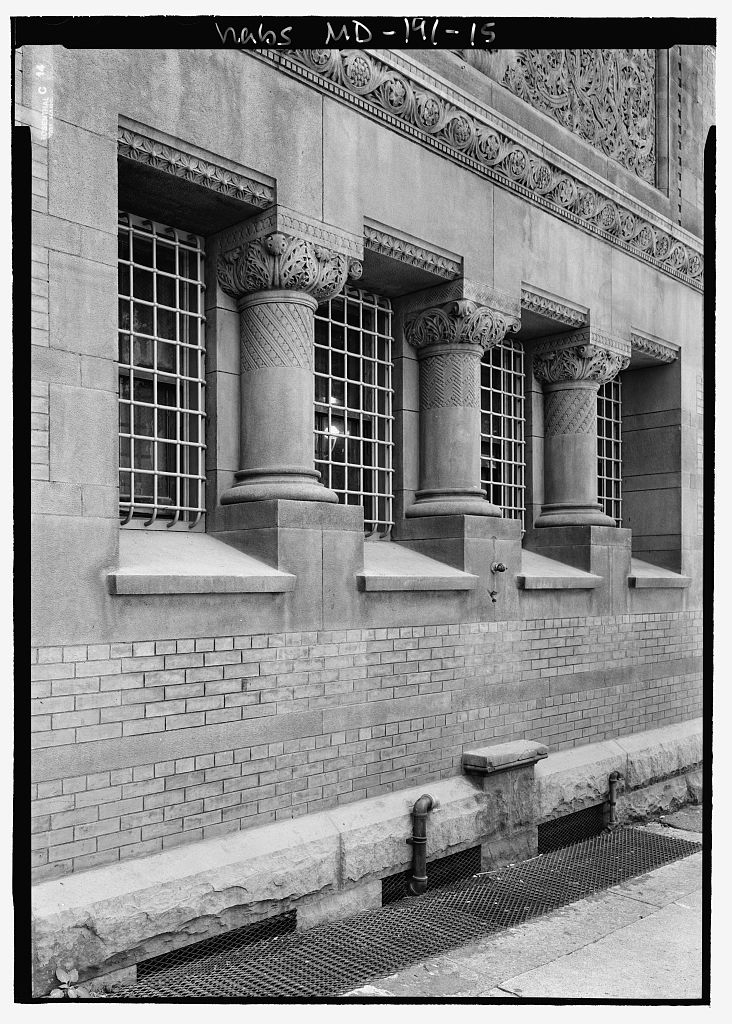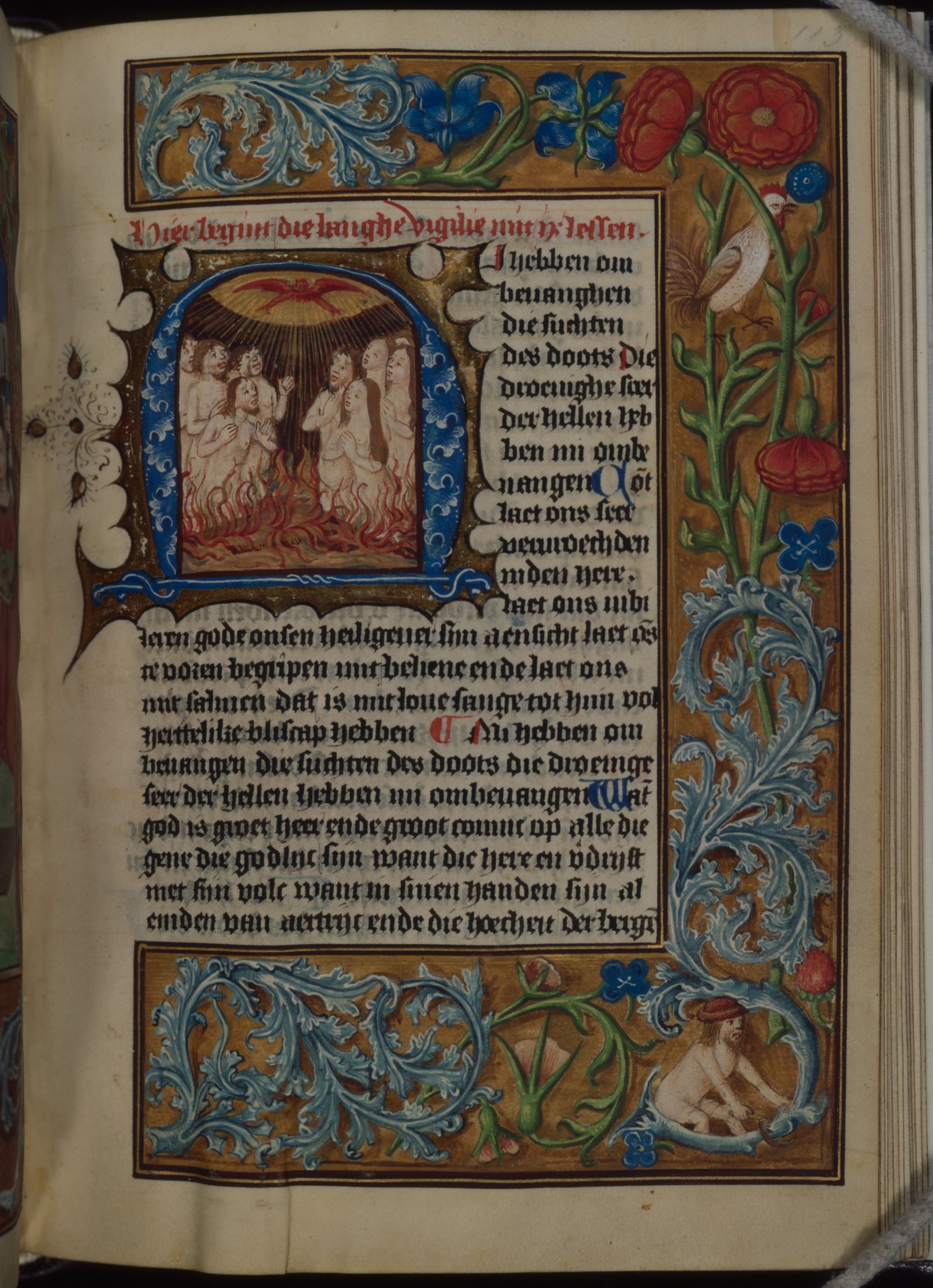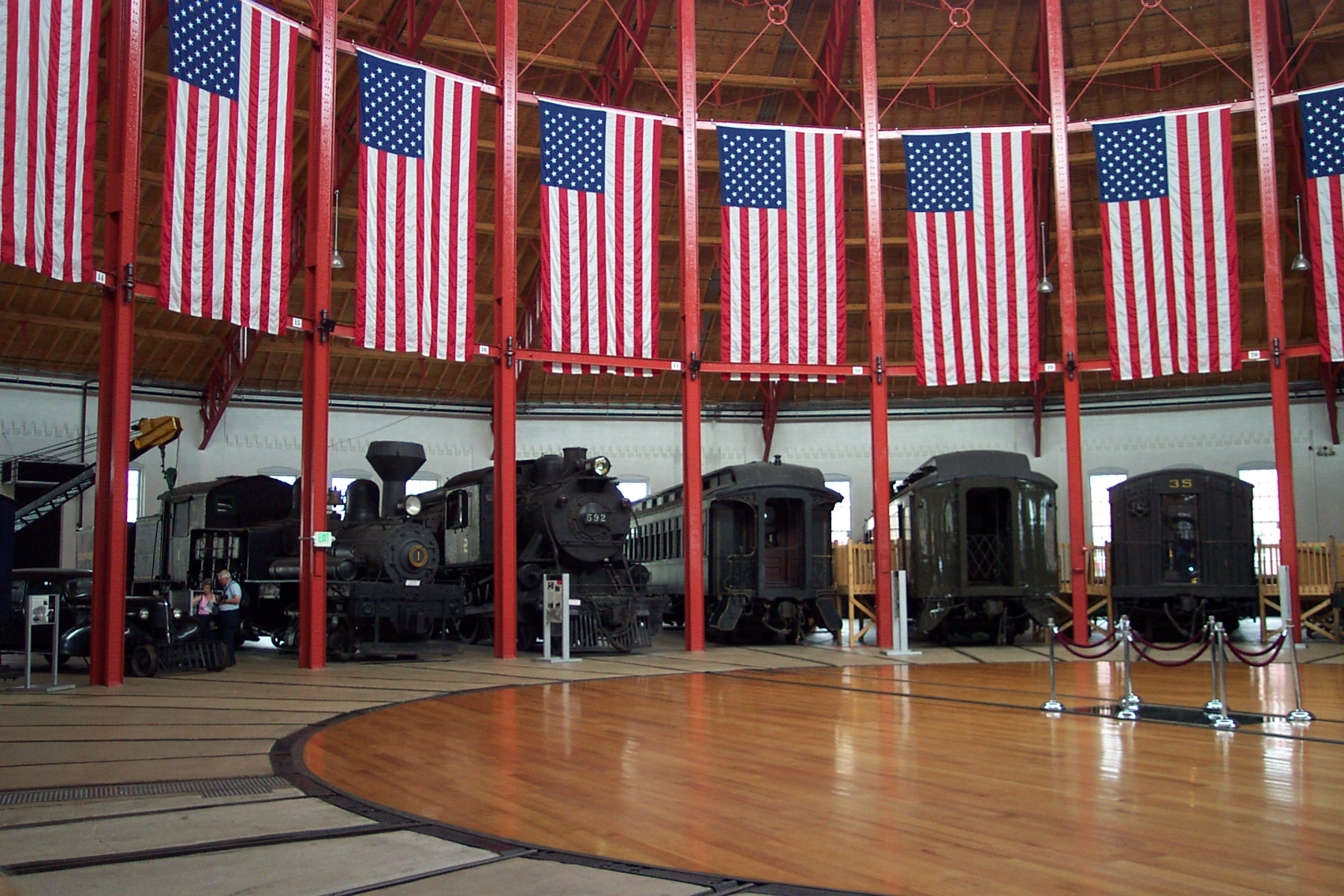|
Baltimore City Landmarks
Baltimore City Landmark is a historic property designation made by the city of Baltimore, Maryland. Nominations are reviewed by the city's Commission for Historical & Architectural Preservation (CHAP) and planning board, and are passed by Baltimore City Council. The landmarks program was created in 1971. CHAP also maintains a list of Historical and Architectural Preservation Districts, separate from its landmarks program. The district program includes 37 unique districts, many of which are also listed on the National Register of Historic Places. As of 2012, the program had designated 163 exterior Baltimore City Landmarks and one interior landmark (for the interior of the Senator Theatre, whose exterior is also landmarked). Also as of 2012, more than 56,000 properties were located in 24 city historic districts, receiving the same protection as individual Baltimore City Landmarks. Criteria In assessing landmarks, the city Commission for Historical & Architectural Preservation ( ... [...More Info...] [...Related Items...] OR: [Wikipedia] [Google] [Baidu] |
Baltimore City Hall Crop
Baltimore ( , locally: or ) is the List of municipalities in Maryland, most populous city in the U.S. state of Maryland, fourth most populous city in the Mid-Atlantic (United States), Mid-Atlantic, and List of United States cities by population, the 30th most populous city in the United States with a population of 585,708 in 2020. Baltimore was designated an Independent city (United States), independent city by the Constitution of Maryland in 1851, and today is the most populous independent city in the United States. As of 2021, the population of the Baltimore metropolitan area was estimated to be 2,838,327, making it the List of metropolitan areas of the United States, 20th largest metropolitan area in the country. Baltimore is located about north northeast of Washington, D.C., making it a principal city in the Washington–Baltimore combined statistical area, Washington–Baltimore combined statistical area (CSA), the third-largest combined statistical area, CSA in the nat ... [...More Info...] [...Related Items...] OR: [Wikipedia] [Google] [Baidu] |
Eutaw Place Baptist Church , part of the American Revolutionary War
{{disambig, geo ...
Eutaw may refer to: *Eutaw, Alabama, a town, United States **Eutaw massacre, a racially motivated massacre in that town *Eutaw, Mississippi, a ghost town, United States *Eutaw Street, a major street in Baltimore, Maryland *Eutaw Formation, a geological formation in the U.S. states of Alabama, Georgia, and Mississippi * USS ''Eutaw'' (1863), a Union Navy steam gunboat of the American Civil War *''Eutaw'', an album by Old Crow Medicine Show *A section of Fayetteville, North Carolina, just off of Bragg Boulevard See also *Battle of Eutaw Springs The Battle of Eutaw Springs was a battle of the American Revolutionary War, and was the last major engagement of the war in the Carolinas. Both sides claimed victory. Background In early 1781, Major General Nathanael Greene, commander of the ... [...More Info...] [...Related Items...] OR: [Wikipedia] [Google] [Baidu] |
Flag House & Star-Spangled Banner Museum
The Star-Spangled Banner Flag House, formerly the Flag House & Star-Spangled Banner Museum, is a museum located in the Jonestown/Old Town and adjacent to Little Italy neighborhoods of eastern downtown Baltimore, Maryland, United States. Built in 1793, it was the home of Mary Young Pickersgill when she moved to Baltimore in 1806 and the location where she later sewed the " Star Spangled Banner," in 1813, the huge out-sized garrison flag that flew over Fort McHenry at Whetstone Point in Baltimore Harbor in the summer of 1814 during the British Royal Navy attack in the Battle of Baltimore during the War of 1812. The museum contains furniture and antiques from the Federal period as well as items from the Pickersgill family. A supplemental museum was constructed to the rear next to Pickersgill's home. This museum houses exhibits on the War of 1812 and the Battle of Baltimore. It has an orientation theater, gift shop, exhibit galleries, and meeting rooms. The museum features a 30 ... [...More Info...] [...Related Items...] OR: [Wikipedia] [Google] [Baidu] |
Mercantile Trust And Deposit Company
Mercantile Trust and Deposit Company is a historic bank building in Baltimore, designed by the Baltimore architectural firm of Wyatt and Sperry and constructed in 1885. It has a brick-with-stone-ornamentation Romanesque Revival structure, with deeply set windows, round-arch window openings, squat columns with foliated capitals, steeply pitched broad plane roofs, and straight-topped window groups. The interior features a large banking room with a balcony, Corinthian columns and ornate wall plaster work. The Safe Deposit Company on Redwood Street in Baltimore was one of the few buildings that survived the Great Baltimore Fire of 1904. It was "created as a repository of Southern wealth in 1864" This date was not only "one year before the start of the Civil War but one year after the National Bank Act of 1863". Coincidentally, the March 10, 1864 grant of the state charter for the Safe Deposit was on the same day that newspapers reported General Sherman's arrival in Vicksburg, MS ... [...More Info...] [...Related Items...] OR: [Wikipedia] [Google] [Baidu] |
Emerson Bromo-Seltzer Tower
The Emerson Tower (often called the Emerson Bromo-Seltzer Tower or the Bromo Tower) is a 15-story, clock tower erected in 1907–1911 at 21 South Eutaw Street, at the northeast corner of Eutaw and West Lombard Streets in downtown Baltimore, Maryland. It was the tallest building in the city from 1911 to 1923, until supplanted by the Citizens National Bank building (later First National Bank of Maryland, then occupied by MECU - Municipal Employees Credit Union) at the southeast corner of Light and Redwood (German) Streets. It was designed by local architect Joseph Evans Sperry (1854-1930) for Isaac Edward Emerson (1859-1931), who invented the Bromo-Seltzer headache remedy. For years, the landmark tower was surrounded by and part of the Emerson Drug Company with its office headquarters and manufacturing plant for the carbonated headache pain relief tablets or powder Bromo-Seltzer. Later, the Emerson building around it was razed and replaced by the Baltimore City Fire Department's ... [...More Info...] [...Related Items...] OR: [Wikipedia] [Google] [Baidu] |
Druid Hill Park
Druid Hill Park is a urban park in northwest Baltimore, Maryland. Its boundaries are marked by Druid Park Drive (north), Swann Drive and Reisterstown Road (west and south), and the Jones Falls Expressway / Interstate 83 (east)."Druid Hill Park" Baltimore City Department of Recreation and Parks. Retrieved 2010-10-04 Inaugurated in 1860, under the administration of city , Druid Hill Park ranks with |
Homewood Museum
The Homewood Museum is a historical museum located on the Johns Hopkins University campus in Baltimore, Maryland. It was listed as a National Historic Landmark in 1971, noted as a family home of Maryland's Carroll family. It, along with Evergreen Museum & Library, make up the Johns Hopkins University Museums. History The Homewood Estate was offered as a wedding gift in 1800 by Charles Carroll of Carrollton, (1737-1832), the longest surviving signer of the Declaration of Independence, to his son Charles Carroll Jr. It occupied acres in northern Baltimore and was first known as "Merryman's Lott." Carroll had purchased the parcel of land in 1794. Charles Carroll Jr. began construction on a stately and modern country home of his own design in 1801 and had mostly finished by 1808. It cost $40,000, four times the budgeted expense. For reasons both personal and political, "Homewood" led to a severe breach in relations between father and son. Ultimately, Carroll (Senior) bought the hou ... [...More Info...] [...Related Items...] OR: [Wikipedia] [Google] [Baidu] |
Baltimore City Circuit Courthouses
The Baltimore City Circuit Courthouses are state judicial facilities located in downtown Baltimore, Maryland. They face each other in the 100 block of North Calvert Street, between East Lexington Street on the north and East Fayette Street on the south across from the Battle Monument Square (1815-1822), which held the original site of the first colonial era courthouse for Baltimore County (third county courthouse after previous locations / county seats in old Baltimore village on the Bush River and later Joppa) and Town, after moving the Baltimore County seat in 1767 to the burgeoning port town on the Patapsco River established in 1729-1730. The first courthouse in Baltimore Town was built in 1767 and also later housed briefly for a decade the new United States federal courts in the city, after the ratification and operation of the new Constitution in 1789. On July 28, 1776/it was the site for the public reading of the Declaration of Independence, just previously approved by ... [...More Info...] [...Related Items...] OR: [Wikipedia] [Google] [Baidu] |
Evergreen Museum & Library
Evergreen Museum & Library is a historic house museum and research library in Baltimore, Maryland, United States. It is located between the campuses of the Notre Dame of Maryland University and Loyola University Maryland. It is operated by Johns Hopkins University along with Homewood Museum; both make up the Johns Hopkins University Museums. History The mansion was built in the mid-19th century and bought in 1878 by the president of the Baltimore and Ohio Railroad, John W. Garrett. Railroads were then a key industry in the United States and, as Baltimore's Garrett family owned and managed one of the biggest rail companies, the home grew and became both luxurious and famous. John Garrett's son T. Harrison added a wing containing a billiard room, bowling alley, and a gymnasium, which in later years were converted into an art gallery and private theater. Evergreen served as a home for the family until 1952, when it was donated to the university. It was listed on the National Registe ... [...More Info...] [...Related Items...] OR: [Wikipedia] [Google] [Baidu] |
B&O Railroad Museum
The B&O Railroad Museum is a museum and historic railway station exhibiting historic railroad equipment in Baltimore, Maryland. The Baltimore and Ohio Railroad (B&O) company originally opened the museum on July 4, 1953, with the name of the Baltimore & Ohio Transportation Museum. It has been called one of the most significant collections of railroad treasures in the world and has the largest collection of 19th-century locomotives in the U.S. The museum is located in the Baltimore and Ohio Railroad's old Mount Clare Station and adjacent Railway roundhouse, roundhouse, and retains 40 acres of the B&O's sprawling Mount Clare Shops site, which is where, in 1829, the B&O began America's first railroad and is the oldest railroad manufacturing complex in the United States. Mount Clare is considered to be a birthplace of American railroading, as the site of the first regular railroad passenger service in the U.S., beginning on May 22, 1830. It was also to this site that the first telegra ... [...More Info...] [...Related Items...] OR: [Wikipedia] [Google] [Baidu] |
College Of Medicine Of Maryland
The College of Medicine of Maryland, or also known since 1959 as Davidge Hall, is a historic domed structure in Baltimore, Maryland. It has been in continuous use for medical education since 1813, the oldest such structure in the United States. A wide pediment stands in front of a low, domed drum structure, which housed the anatomical theater. A circular chemistry hall was housed on the lower level under the anatomical theater. Design The dome is a Delormé structure, with small horizontal slats forming the dome. The design, originated by Philibert de l'Orme, was also used at Jefferson's Monticello; somewhat inspired by the ancient Pantheon in Rome. The supervising architect was Robert Cary Long Sr., a famous local father-son team of architects who also designed many other famous buildings in the city. The front portico facing West Lombard Street (formerly King George Street) is of wood construction with Doric columns. To the west is South Greene Street (named for Revolutionary ... [...More Info...] [...Related Items...] OR: [Wikipedia] [Google] [Baidu] |
Cylburn Arboretum
__NOTOC__ Cylburn Arboretum ronounced sil·brn aar·br·ee·tm is a city park with arboretum and gardens, located at 4915 Greenspring Avenue, Baltimore, Maryland. It is open daily excluding Mondays without charge. The arboretum began as the private estate of businessman Jesse Tyson, who started construction of Cylburn Mansion in 1863. The house, designed by Baltimore City Hall architect George Aloysius Frederick, was eventually completed in 1888 and remains intact, a stone structure built of gneiss from Tyson's quarries at Bare Hills, with mansard roof, tower, and an Italianate cupola. It became the Cylburn Wildflower Preserve and Garden Center in 1954 and, in 1982, was renamed the Cylburn Arboretum Association. The Cylburn Mansion houses a display of watercolor paintings of Maryland wildflowers that is open to the public. Today the arboretum contains an extensive collection of trees and woody shrubs based loosely on the Tysons' original plantings. Collections include aza ... [...More Info...] [...Related Items...] OR: [Wikipedia] [Google] [Baidu] |

.jpg)







.jpg)